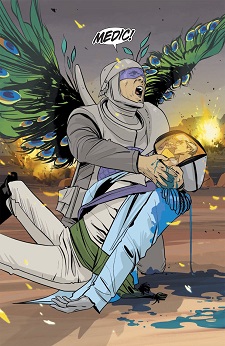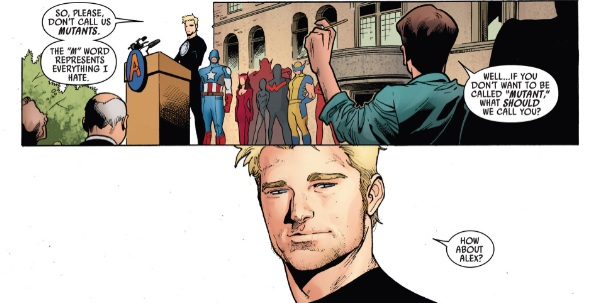
So, to recap, the latest issue of Brian Vaughan’s and Fiona Staples’ Saga comic felt foul of Apple censorship over the panel to left amongst others, and it couldn’t be sold through the Comixology Apple App. On hearing this, Vaughan and Staples went on a PR campaign to protest this decision, only for Comixology, their distributor, to come back a day later and say it was all a misunderstanding and Apple never had even seen the issue and it had been their own decision not to publish it through the Apple app.
A happy ending? Not really, as apart from that whole being lied to by Comixology about who took the decision to censor what, there’s still the reality of the threat of Apple censorship and the influence it already has on how companies like Comixology behave. It was their ideas about what Apple would and would not allow to be published on iOS that led them to pull Saga 12 and this might not have been the first time they did it. It’s not just a problem with comics either of course; everybody who has to deal with Apple as gatekeeper to publish on the iOS platform will have to self censor to a greater or lesser intent to deal with their guidelines, which can also be a bit vague.
It’s not just Apple either. We’re entering an era in which, as everything migrates online while the devices that we go online with become increasingly less open, there are now several powerful gatekeepers emerging that can strangle freedom of speech. Apple, Google, Amazon, all have the potential to do this, or are already acting as a censor to some extent. This is not necessarily done maliciously, but in any situation where there’s only one party that can give you access to a certain platform, there will be censorship emerging naturally from ordinary business considerations. When we were all using desktop pcs this wasn’t that big a problem, as there never was this central gatekeeper and you as a user could decide for yourself what to and what not to install. With publication on an iOS platform only possible through the Apple store, this is no longer possible and anything Apple deems unsavoury or against their own interests will therefore be rejected.
The only real solution to this problem therefore consists of the opening up of all such walled gardens, to allow rival shops on iOS, Android, Kindle, etc, rather than allow a monosophy of gatekeepers to persist.
